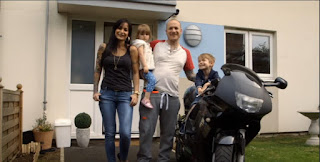As part of my audience research I thought that it might be useful to visit the show team's facebook page, to see what kind of public interest that they mostly attract, the age, gender, ect of those who like and share their posts, as well as the comments that are uploaded. Since I follow the page myself being a member of the team, I was already aware that they have thousands of likes and comments and are extremely popular and well-known within the showing circuit. This certainly was something that I took into consideration when deciding to focus my documentary on them, as I knew that it would definitely that would be able to attract interest.
When analysing exactly what type of audience that the Craig Elenor Equestrian Agency attracts, I found that it was quite diverse. In terms of age, I would say that they predominantly engage a more mature age group, ranging from about 30-40, however there is still a great deal of interest from many younger followers.
With regards to the level and abilities of the riders and trainers engaging with the page, there is a wide range of variety; from the top producers, trainers, breeders and riders in the business, to those competing at local level, or simply enjoy finding out about Sara and Craig's success. However I would certainly say that as showing quite a niche area of competing with horses, those who would take an active interest in it would most likely have some sort of involvement within showing themselves or at least know someone who does. Nevertheless I feel to create a documentary on a show teams day to day running of their yard would hopefully attract the attention of anyone really that is involved with horses, not just those who compete in showing.
When reading through some of the comments that were posted in response to the image shown above, I was given further insight into the specific audience profile that I will be targeting. This reiterated my initial estimation of the age group and level of profession within showing that my target audience would be of. I also found that a large proportion of the posts came from females, which again will be something that I will need to take into consideration when creating my production.






















